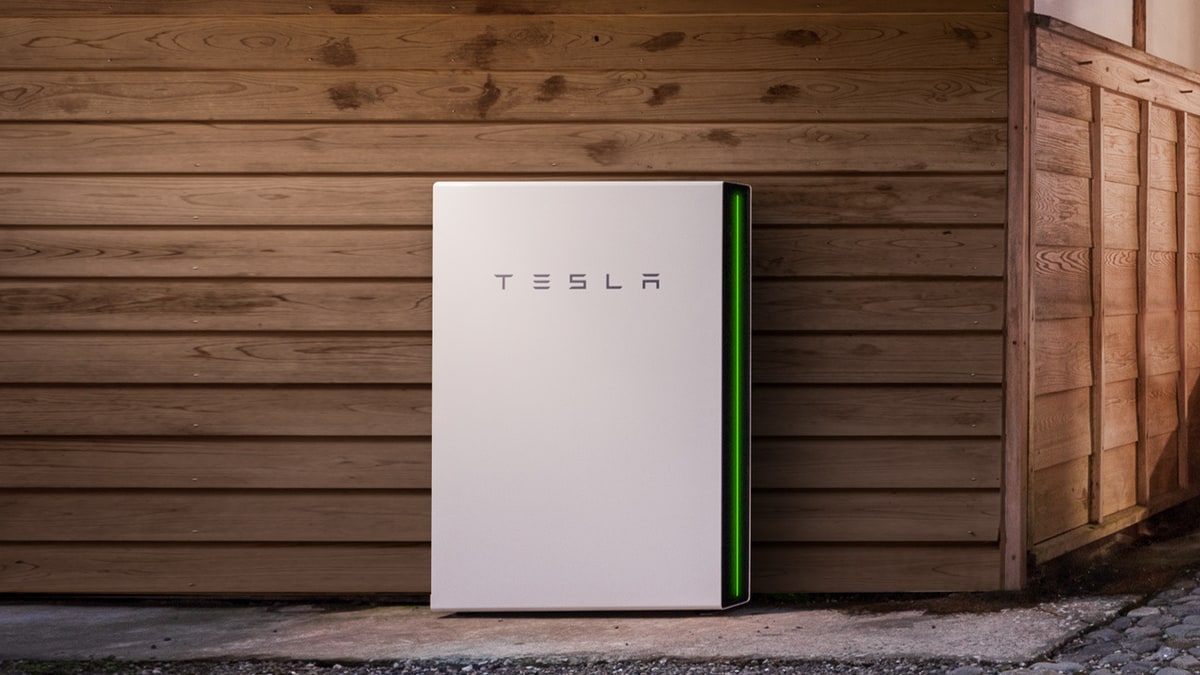Australians are buzzing with excitement over the Tesla Powerwall 3, leading to a flood of inquiries about its compatibility with three-phase homes. One question stands out:
Can I install a Powerwall 3 on my three-phase home?
The Short Answer: Yes!
While the Powerwall 3 is a single-phase battery, it can be effectively utilized in a three-phase home, especially when connected to the grid. It offsets electricity bills across all three phases just like it would in a single-phase setup. However, it’s important to note that during a grid outage, its functionality may be limited.
How the Powerwall 3 Works with Three-Phase Systems
The effectiveness of the Powerwall 3 in a three-phase setup largely depends on how it is wired into your home. In this article, we’ll explore various configurations, helping you determine the best option for your needs.
Key Considerations
- Backup Gateway 2: In Australia, the Powerwall 3 is typically installed with a Backup Gateway 2. This device manages backup switching and monitors power flow, ensuring efficient operation of the battery.
- Utility Meter: This guide assumes you have a three-phase utility meter, not three separate single-phase meters.
- Local Regulations: Always verify with your local Distribution Network Service Provider (DNSP) regarding the compatibility of these configurations.
- Power Output: The Powerwall 3 can be configured by Tesla for 5 kW, 10 kW, or 11 kW output, depending on local regulations.
Configuration Options for Powerwall 3 on a Three-Phase Home
Config #1: Powerwall 3 with Solar (No Existing Solar)
- Setup: 1 Powerwall 3, 1 Gateway 2, all loads on the black phase backed up.
- Operation: The Powerwall 3 can accommodate up to 20 kW of solar panels, charging the battery via solar, the grid, or both. All three phases will have their electricity bills offset.
- Backup: In the event of a grid failure, only the black phase will be backed up.
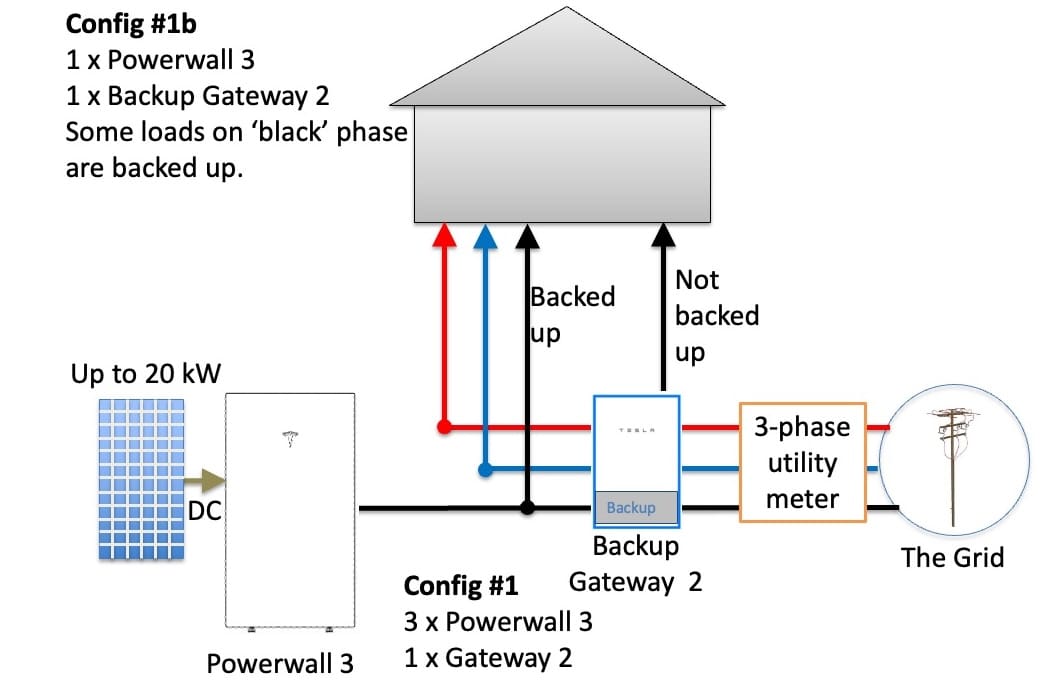
Config #2: Powerwall 3 with Existing Single-Phase Solar
- Setup: 1 Powerwall 3, 1 Gateway, existing single-phase solar.
- Operation: The existing solar inverter can charge the battery, and during an outage, the black phase remains backed up.
- Option to Ditch Inverter: Disconnecting the existing solar from its inverter and connecting it directly to the Powerwall can offer efficiency and better monitoring.
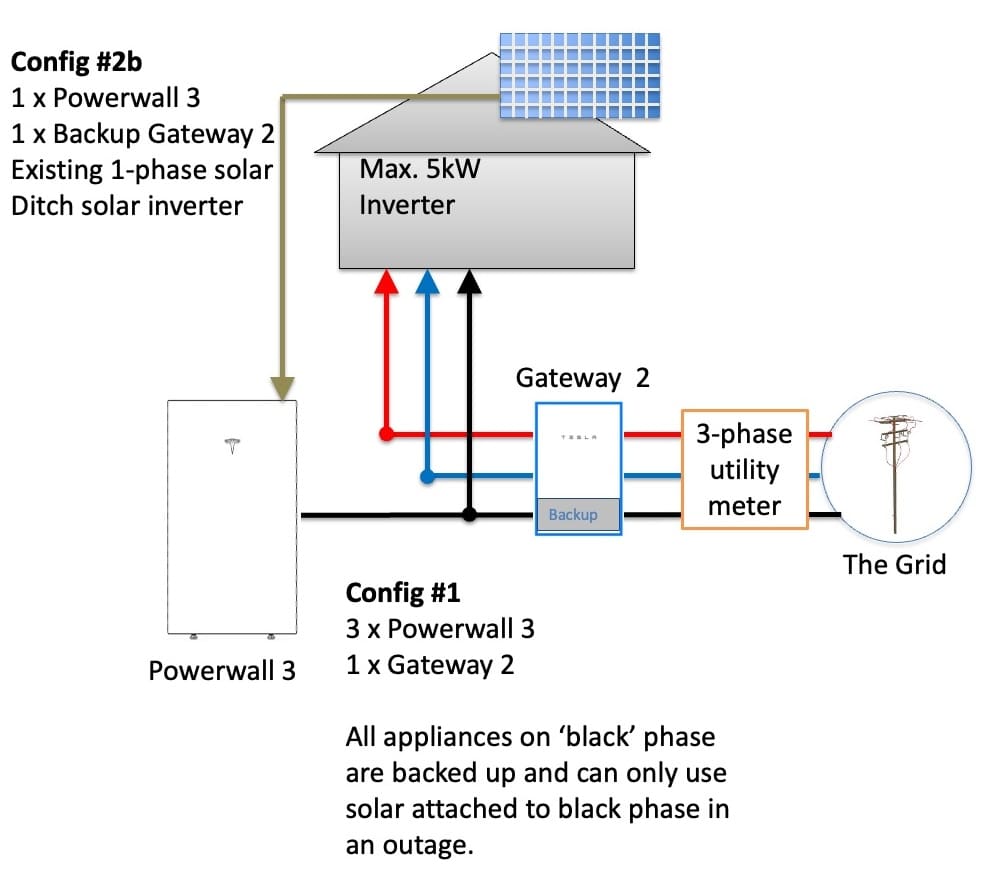
Config #3: Powerwall 3 + New Solar with Existing Single-Phase Solar
- Setup: Existing single-phase solar on one of the two non-Powerwall phases, new solar connected to the Powerwall.
- Benefit: No disruption to the old solar system or its warranty.
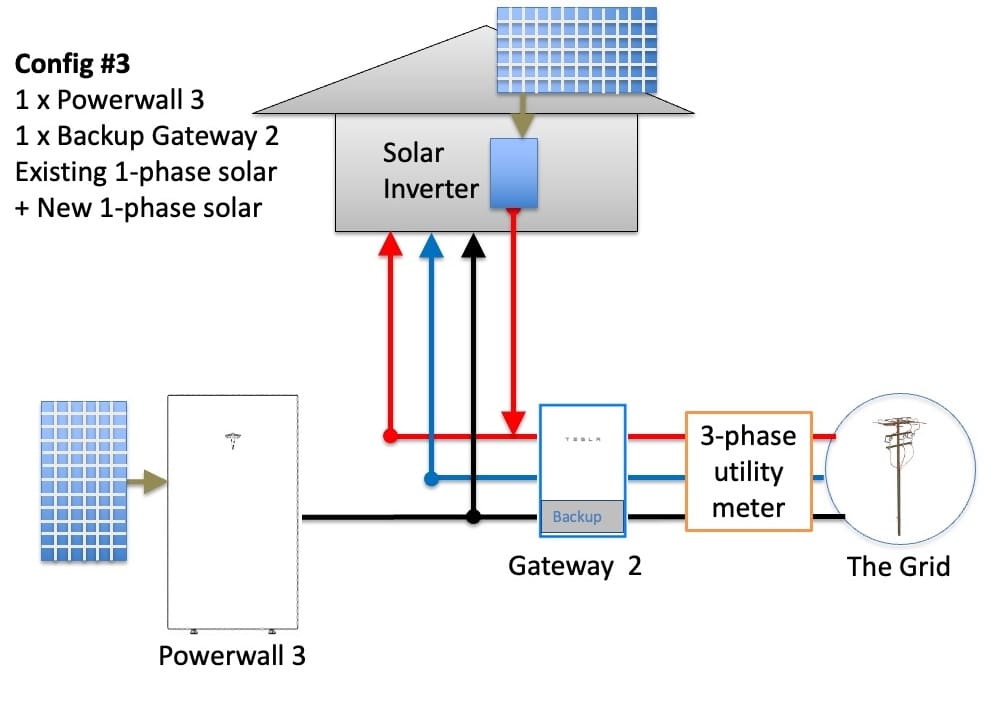
Config #4: Powerwall 3 with Existing Three-Phase Solar
- Option 1: Use the Powerwall solely as a battery. In this case, the black phase will be backed up, but solar will not function during an outage.
- Option 2: If your solar array is 20 kW or less, it can be plugged into the Powerwall, allowing solar operation during outages.
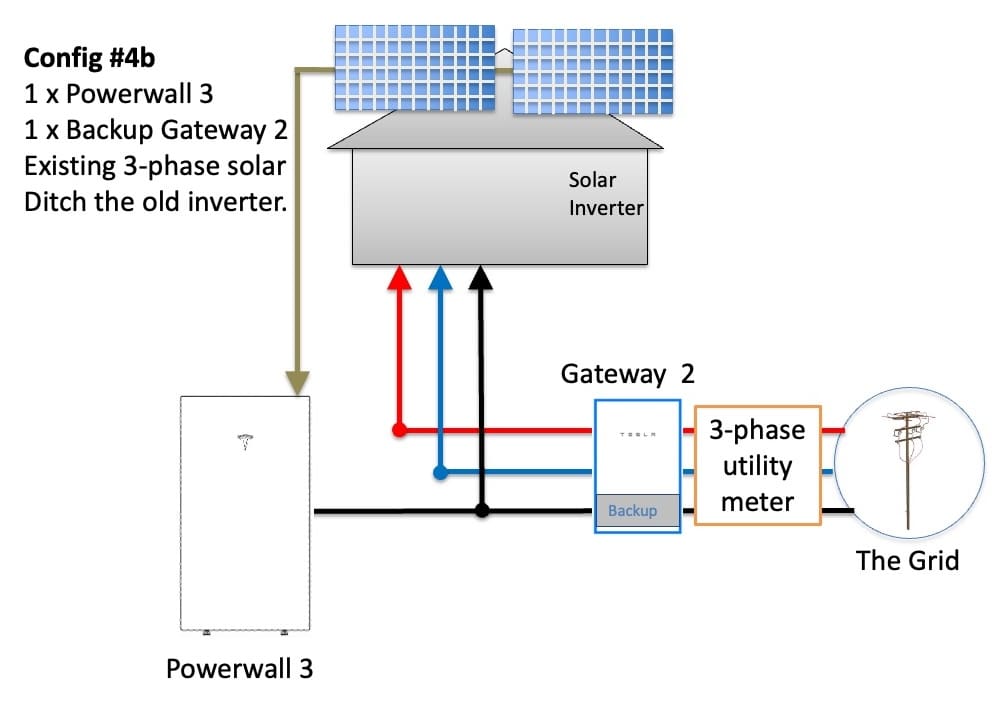
Config #5: Powerwall 3 with Existing Microinverters
- Operation: Only microinverters on the same phase as the Powerwall will function during an outage. With the grid connected, all microinverters will operate.
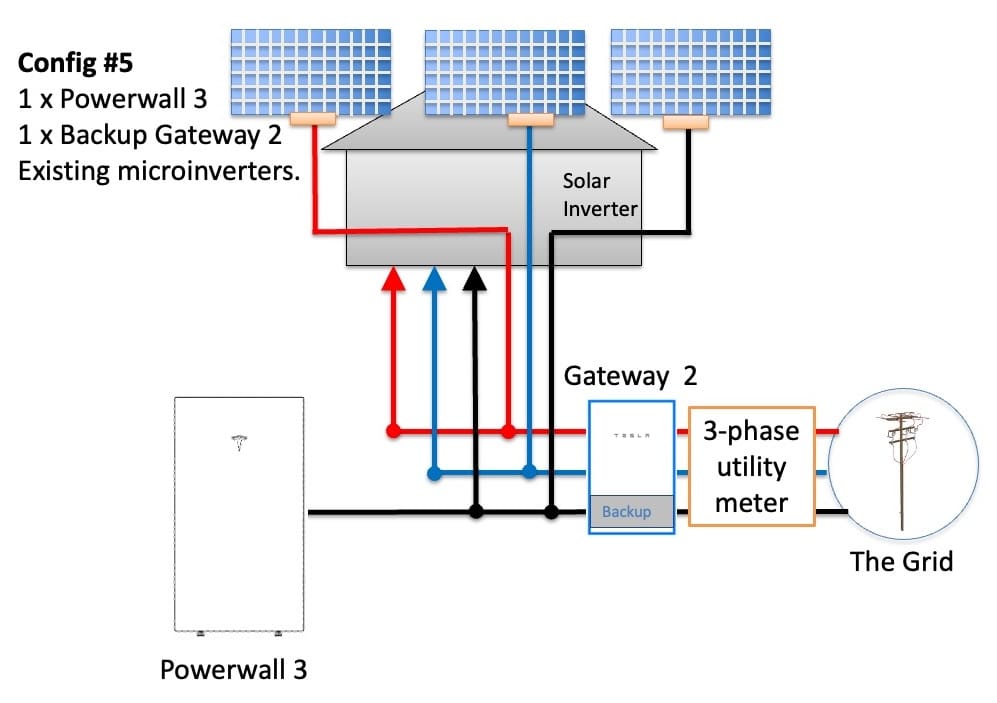
Config #6: Three Powerwalls on One Phase of a 3-phase home
- Note: This setup is often prohibited by DNSPs due to exceeding power limits on a single phase.
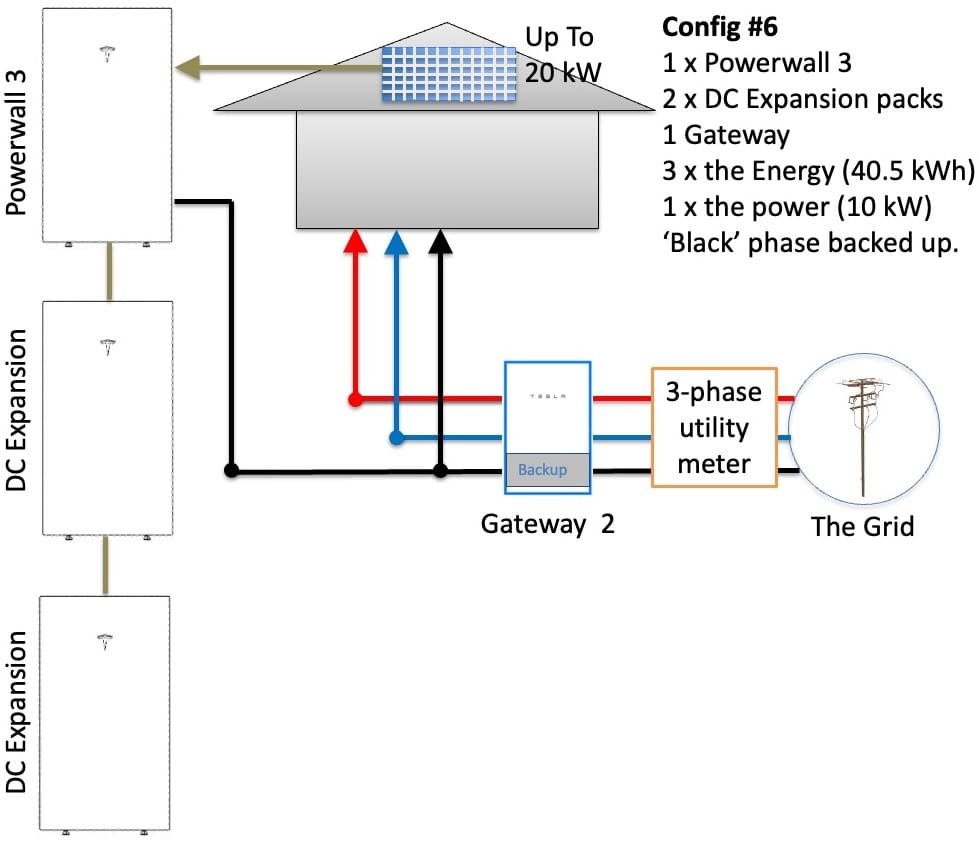
Config #7: Three Powerwalls, One on Each Phase
- Operation: This configuration provides backup and capacity across all three phases, but only one Powerwall will function during an outage.
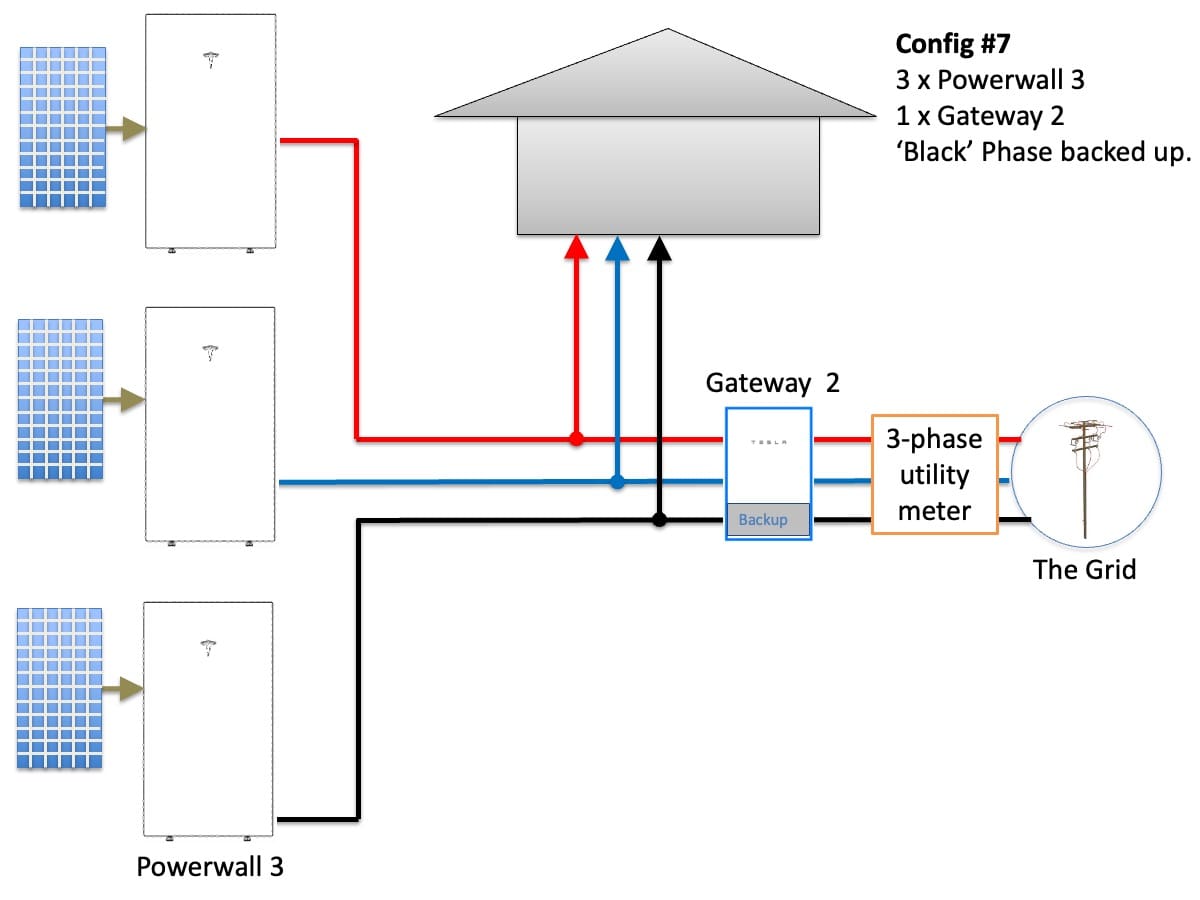
Config #8: Three Powerwall 3s with Three Gateways
- Caution: This is an expensive solution with limited backup capabilities. It’s advisable to consider a dedicated three-phase battery system from brands like Fronius or Sungrow instead.
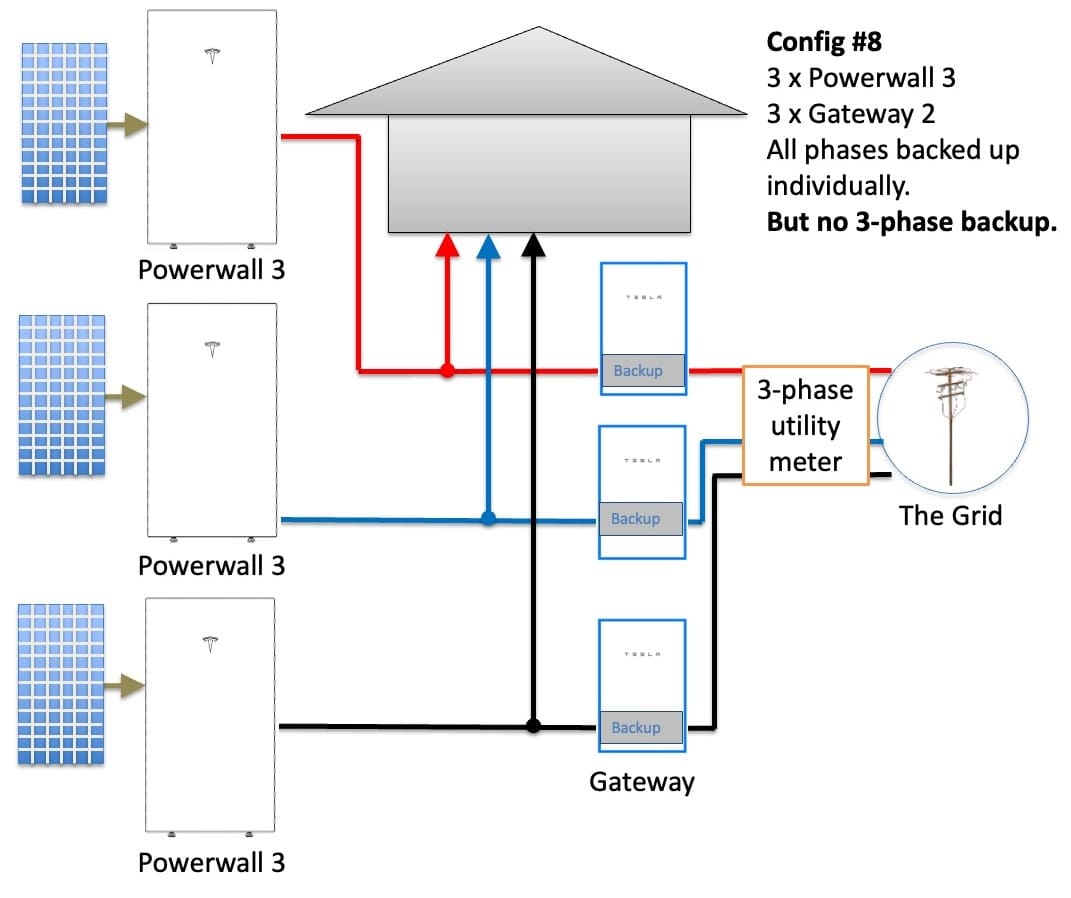
Total Solar Solutions for Tesla Powerwall Installation in Victoria, Australia
For those in Victoria looking to integrate the Powerwall 3 with solar, consider reaching out to reputable installer like Total Solar Solutions, Total Solar Solutions offer comprehensive solar solutions tailored to ensure optimal compatibility and performance with the Powerwall.
Also read: Solar Energy: Residential and Commercial Solar Solutions in Australia
Conclusion
The Tesla Powerwall 3 can be integrated into a three-phase home, offering various configurations to meet your energy needs. Each setup has its pros and cons, and it’s essential to consult with a qualified installer to determine the best option for your specific situation. Whether you’re retrofitting existing solar or planning a new installation, understanding these configurations will help you maximize the benefits of your Powerwall systems.

